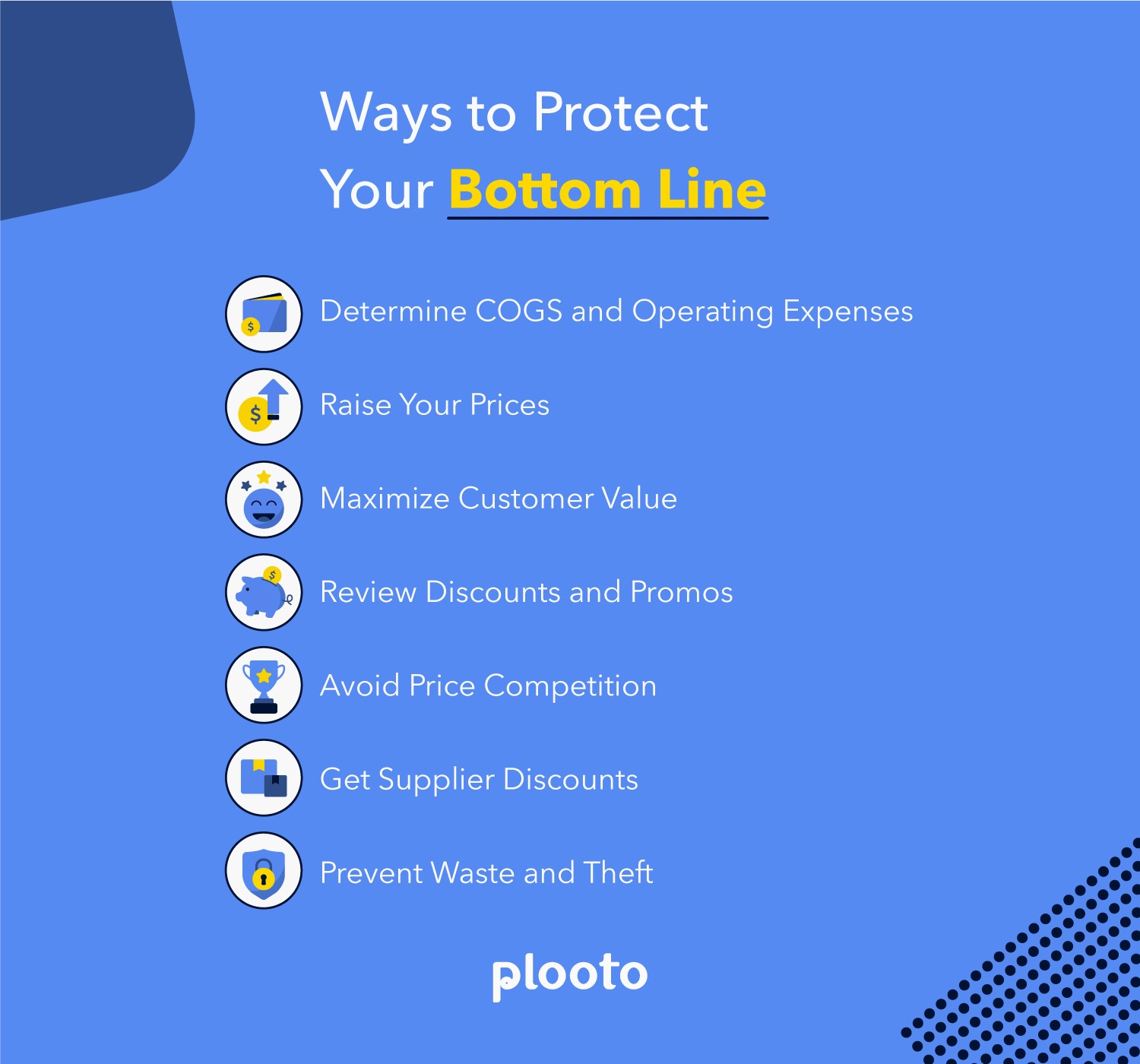
Entrepreneurs of all walks of life are looking to increase their business profit. After all, if you're not running a profitable venture, then it’s difficult to expand and grow. However, knowing how to increase profitability isn’t always easy. What are the biggest drivers of profit? How do you set and achieve your profit targets?
In this article, we'll explore these questions in depth so that you can understand why increasing business profit is important and how to go about doing it effectively.
Sign up for a Free Trial today
SHORTCUTS
- What is a profit margin?
- How do you determine the profitability of a business?
- Understanding what drives profit
- The relationship between profitability and growth
- Keys to profitable growth
- How to set and achieve your profit targets
- 8 tips to maximize profits in business
- How Plooto can help you achieve profitability and growth
What is a profit margin?
You can't increase your profit margin without knowing what it means and there are a few different types of margins to consider.
Gross profit margin
Gross profit margin is a standard key metric used to measure the financial health of a business. It is calculated as the difference between revenue – all the money your business collects – and the cost of goods and services sold, expressed as a percentage.
This figure helps business owners understand how much of their total sales are actually being kept in profits after deducting expenses related to the production or delivery of products and services.
For example, if your business has total sales of $1 million with your cost of goods sold at $600,000, then your gross profit margin would be 40%. This means that your company keeps 40% ($400,000) out of every dollar earned.
This is the most important part because understanding this ratio can help you make better decisions on pricing strategies and operations management to maximize your returns on investments and increase profitability.
Below are the other profit margins for reference.
Operating profit margin
Operating profit margin is a metric showing the amount of profit made from its operations without taking into account other investment activities such as interest income. It is calculated by deducting all operating expenses such as wages, raw materials, and depreciation from the gross profit to get the net operating profits before taxes.
Net profit margin
Net profit margin is a metric taking into account all expenses and taxes. It is calculated by subtracting all operational costs, including wages, raw materials, depreciation and taxes, from the total revenue generated by a business.
How do you determine the profitability of a business?
The best place to start determining profitability of a business is by analyzing your financial reports. The most important metric here is the gross profit margin, in which case the higher this percentage, the better.
Other important metrics to look at are the operating profit margin, which measures the amount of profits generated from day-to-day operations, and net profit margin, which measures the total amount of profits kept after deducting all business expenses and taxes.
Additionally, businesses should also take into account turnover rate – the number of sales made per period – and gross profit per employee to measure productivity and efficiency levels.
Understanding what drives profit
The biggest drivers of profit include increasing sales volume, reducing costs associated with production or delivery of goods or services and improving efficiency levels of your business. Companies can increase their sales by creating marketing campaigns that target the right audience and offering discounts or loyalty programs to retain customers.
They can also reduce costs by optimizing operations, utilizing technology and outsourcing certain tasks. Improving efficiency levels involves reducing waste, maximizing resources and streamlining processes to get the most out of every employee.
In short, the 4 areas that can help drive profitability are:
The relationship between profitability and growth
The bottom line is that your business won't be able to sustainably grow unless you are profitable. Businesses that are able to generate a profit can reinvest those profits into their operations, allowing them to grow and expand.
A company's ability to make a profit is essential for its long-term success, as it provides the capital needed for investments in new products or services, research and development, marketing initiatives, and more.
Conversely, businesses that fail to generate sufficient profits may struggle to stay afloat due to limited resources and cash flow problems. This is one of the reasons many startups fail – because they are unable to generate the revenue to sustain themselves and cash ultimately dries up.
Keys to profitable growth
Here we highlight the steps you can take toward profitable growth.
- Clearly define your goals and objectives – Without a concrete goal, you are aimless. Create a formal written plan from which you can articulate the vision for where you want to take your business.
- Take a good look at your business model – Keep a keen eye on your competitive advantage, your scalability and sustainability.
- Create a long-term financial plan – Write down specific milestones and key performance indicators (KPIs) as well as timelines for success
- Get alignment with your team – Help everyone buy into your vision through proactive and transparent communication, cultivating a positive company culture and hiring the right talent.
- Earmark the required financial resources – Growing your business requires thoughtful investment.
- Optimize your business' performance – There are plenty of new technologies and automation tools that can help save you time and money
- Always be reviewing and adapting – You can't improve what you don't measure: be proactive with your analysis and prepared to pivot as the market or needs of your business change.
How to set and achieve your profit targets
Now let's get even more specific about what you need to do to grow your profit margin.
-
Determine a targeted return on invested capital
For every dollar you put into your business, what is the expected outcome and how much do you anticipate to earn back through that investment.
-
Calculate the target gross profit margin you will need to achieve this profit goal
The average profit margin ratio for successful businesses is typically between 5-10%, but this can vary depending on the sector.
-
Prepare a sales forecast by month and product line
Plotting out the total sales you're going to make each month will give you a good idea of where you need to increase efforts within your business to grow. -
Forecast cost of goods sold and your operations
Determine how much cash your business is burning through each month to keep you operational.
.jpeg?width=1500&height=1704&name=8-Tips-to-Maximize-Profits-in-Business%20(1).jpeg)
8 tips to maximize profits in business
Here are 8 quick tips to keep in mind when working to get the highest profits from your business.
- Assess and Reduce Operating Costs
- Adjust Pricing/Cost of Goods Sold (COGS)
- Review Your Product Portfolio and Pricing
- Lower Your Overhead
- Refine Demand Forecasts
- Sell Off Old Inventory
- Increase Order Efficiency
- Add Recurring Revenue
How Plooto can help you achieve profitability and growth
In the vein of optimizing technology and simplifying work for you and your business, Plooto is a cloud-based platform that automates the end-to-end AP & AR process. Whether its collecting invoices from suppliers, to sending payments, approving them, or even collecting recurring payments, Plooto does it all, for the fraction of the cost.
Increasing business profitability and growth is essential for any entrepreneur looking to ensure the long-term success of their venture.














